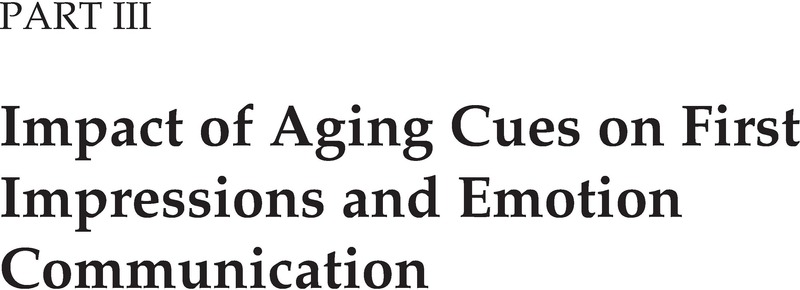Book contents
- Emotion Communication by the Aging Face and Body
- Studies in Emotion and Social Interaction
- Emotion Communication by the Aging Face and Body
- Copyright page
- Contents
- Figures
- Tables
- Contributors
- Preface: Communicating Emotion with an Aging Face and Body
- Part I Basic Processes
- Part II Aging and Aging Stereotypes
- Part III Impact of Aging Cues on First Impressions and Emotion Communication
- Part IV The Effects of Facial Movement Impairment of Emotion Communication
- Part V Methodological Approaches to the Study of the Effects of Aging on Emotion Communication
- Index
- Studies in Emotion and Social Interaction
- References
Part III - Impact of Aging Cues on First Impressions and Emotion Communication
Published online by Cambridge University Press: 07 December 2023
- Emotion Communication by the Aging Face and Body
- Studies in Emotion and Social Interaction
- Emotion Communication by the Aging Face and Body
- Copyright page
- Contents
- Figures
- Tables
- Contributors
- Preface: Communicating Emotion with an Aging Face and Body
- Part I Basic Processes
- Part II Aging and Aging Stereotypes
- Part III Impact of Aging Cues on First Impressions and Emotion Communication
- Part IV The Effects of Facial Movement Impairment of Emotion Communication
- Part V Methodological Approaches to the Study of the Effects of Aging on Emotion Communication
- Index
- Studies in Emotion and Social Interaction
- References
Summary

- Type
- Chapter
- Information
- Emotion Communication by the Aging Face and BodyA Multidisciplinary View, pp. 169 - 214Publisher: Cambridge University PressPrint publication year: 2023



